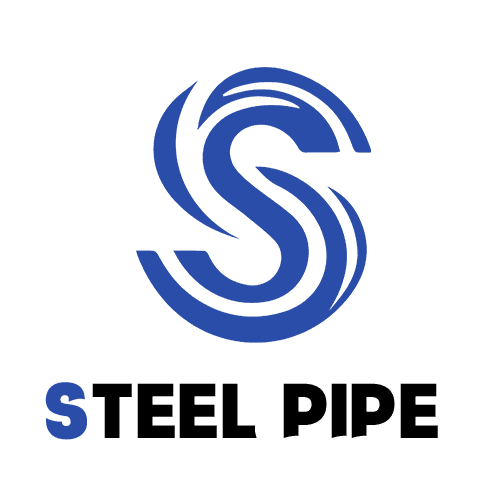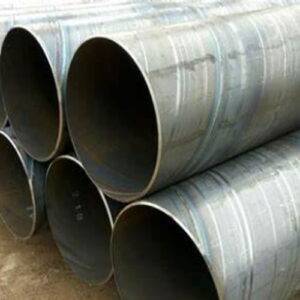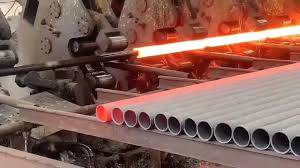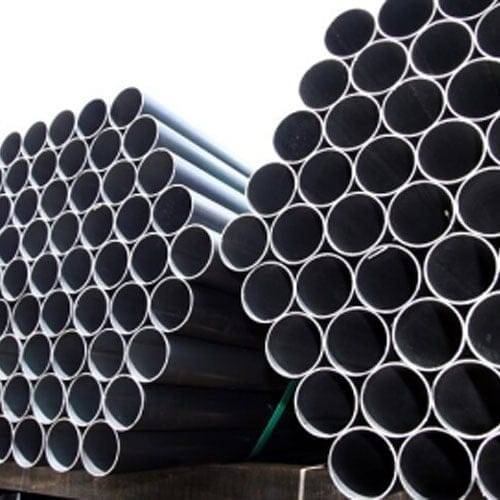Introduction
The steel & pipe industry is a cornerstone of modern infrastructure, playing a critical role in construction, manufacturing, and various other sectors. As we move into 2024, the industry continues to evolve with new innovations and trends that promise to enhance efficiency, sustainability, and performance. This comprehensive guide explores the latest developments in the steel & pipe industry, offering insights into what to expect and how these changes can impact your projects.
The Importance of Steel & Pipe

Why Steel & Pipe Matter
Steel and pipe materials are fundamental to the construction and manufacturing industries. They provide the structural integrity necessary for buildings, bridges, pipelines, and numerous other applications. The versatility, strength, and durability of steel & pipe make them indispensable in modern engineering.
Key Benefits
- Strength and Durability: Essential for long-lasting infrastructure.
- Versatility: Suitable for a wide range of applications.
- Cost-Effective: Provides excellent value over the long term.
Innovations in Steel & Pipe
Advanced Materials
One of the most significant trends in the steel & pipe industry is the development of advanced materials. These materials are designed to offer superior performance, including enhanced strength, corrosion resistance, and lightweight properties.
High-Strength Low-Alloy (HSLA) Steel
HSLA steel is increasingly popular due to its excellent mechanical properties and reduced weight. It is used in applications where high strength and low weight are crucial, such as automotive manufacturing and aerospace.
Benefits of HSLA Steel
- Improved Strength: Higher yield and tensile strength compared to traditional steel.
- Corrosion Resistance: Enhanced resistance to environmental factors.
- Lightweight: Reduces overall weight without compromising strength.
Smart Manufacturing
The integration of smart manufacturing technologies is revolutionizing the steel & pipe industry. This includes the use of artificial intelligence (AI), machine learning, and the Internet of Things (IoT) to improve production efficiency and product quality.
AI and Machine Learning
AI and machine learning algorithms are used to optimize production processes, predict maintenance needs, and enhance quality control. These technologies help reduce waste, lower costs, and improve overall efficiency.
IoT in Manufacturing
IoT devices monitor and control various aspects of the manufacturing process in real-time. This data-driven approach enables manufacturers to make informed decisions, leading to higher productivity and better product quality.
Sustainable Practices
Sustainability is a major focus in the steel & pipe industry, with companies adopting eco-friendly practices to reduce their environmental impact. This includes using recycled materials, improving energy efficiency, and reducing emissions.
Recycling and Reuse
Many steel & pipe manufacturers are increasing their use of recycled materials. Recycling not only conserves natural resources but also reduces the energy required to produce new steel.
Energy Efficiency
Innovations in energy-efficient production methods are helping to lower the carbon footprint of steel & pipe manufacturing. These methods include the use of renewable energy sources and advanced energy management systems.
New Coating Technologies
Coatings play a crucial role in protecting steel & pipe from corrosion and wear. Advances in coating technologies are providing better protection and extending the lifespan of steel products.
Anti-Corrosion Coatings
New anti-corrosion coatings are designed to provide superior protection in harsh environments. These coatings help extend the life of pipelines, bridges, and other infrastructure.
Nano-Coatings
Nano-coatings offer advanced protection at the microscopic level, providing enhanced durability and resistance to environmental factors. They are increasingly used in high-performance applications.
Trends to Watch in 2024
Increasing Use of Robotics
Robotics is becoming more prevalent in the steel & pipe industry, particularly in manufacturing and welding processes. Robots offer high precision, consistency, and efficiency, making them ideal for repetitive and complex tasks.
Benefits of Robotics
- Precision: Robots perform tasks with high accuracy.
- Efficiency: Increased production speed and reduced downtime.
- Safety: Robots can operate in hazardous environments, reducing risks to human workers.
Growth of Modular Construction
Modular construction is gaining traction as a method to streamline building processes. This approach involves prefabricating sections of a building in a factory setting and then assembling them on-site.
Advantages of Modular Construction
- Speed: Faster construction times compared to traditional methods.
- Quality Control: Factory settings allow for better quality control.
- Cost Savings: Reduced labor and material costs.
Enhanced Data Analytics
Data analytics is playing a critical role in optimizing operations within the steel & pipe industry. By analyzing large datasets, companies can identify trends, predict demand, and make informed decisions.
Applications of Data Analytics
- Predictive Maintenance: Identifying potential equipment failures before they occur.
- Supply Chain Optimization: Improving logistics and inventory management.
- Market Insights: Understanding market trends and customer preferences.
Customization and Personalization
The demand for customized and personalized steel & pipe products is increasing. Advances in manufacturing technology are making it easier to produce tailored solutions that meet specific customer requirements.
Customization Benefits
- Tailored Solutions: Products designed to meet unique needs.
- Competitive Advantage: Differentiation in a crowded market.
- Customer Satisfaction: Higher levels of customer satisfaction and loyalty.
Table: Comparison of Key Innovations in Steel & Pipe

| Innovation | Description | Benefits |
|---|---|---|
| HSLA Steel | High-strength, low-alloy steel with improved mechanical properties | Improved strength, corrosion resistance, lightweight |
| AI and Machine Learning | Technologies used to optimize production processes and quality control | Increased efficiency, reduced waste |
| IoT in Manufacturing | Real-time monitoring and control of manufacturing processes | Higher productivity, better product quality |
| Recycling and Reuse | Using recycled materials in production | Conserves resources, reduces energy use |
| Energy Efficiency | Advanced methods to lower energy consumption in manufacturing | Lower carbon footprint, cost savings |
| Anti-Corrosion Coatings | Advanced coatings designed to protect against corrosion | Extended product lifespan, enhanced durability |
| Nano-Coatings | Microscopic coatings that provide superior protection | Increased durability, resistance to environmental factors |
| Robotics | Use of robots in manufacturing and welding processes | High precision, increased efficiency, improved safety |
| Modular Construction | Prefabrication of building sections in a factory setting | Faster construction, better quality control, cost savings |
| Data Analytics | Analyzing data to optimize operations and understand market trends | Predictive maintenance, supply chain optimization, market insights |
| Customization and Personalization | Producing tailored steel & pipe products to meet specific customer requirements | Tailored solutions, competitive advantage, higher customer satisfaction |
Conclusion
The steel & pipe industry is undergoing significant transformations, driven by technological advancements and a focus on sustainability. Innovations in materials, manufacturing processes, and data analytics are set to enhance the performance and efficiency of steel products in 2024 and beyond. By staying informed about these trends, industry professionals can leverage new technologies to improve their operations, reduce costs, and meet the evolving demands of their customers.
FAQ
What are the main benefits of using HSLA steel?
HSLA (High-Strength Low-Alloy) steel offers improved strength, enhanced corrosion resistance, and reduced weight compared to traditional steel. These benefits make it ideal for applications where high performance and durability are crucial.
How do AI and machine learning improve steel & pipe manufacturing?
AI and machine learning optimize production processes by analyzing data to predict maintenance needs, enhance quality control, and improve efficiency. These technologies help reduce waste, lower costs, and increase overall productivity.
What role does sustainability play in the steel & pipe industry?
Sustainability is a major focus in the steel & pipe industry. Companies are adopting eco-friendly practices such as using recycled materials, improving energy efficiency, and reducing emissions to minimize their environmental impact.
How do new coating technologies benefit steel & pipe products?
Advanced coating technologies, such as anti-corrosion and nano-coatings, provide superior protection against environmental factors, extending the lifespan and durability of steel & pipe products. These coatings are particularly beneficial in harsh and demanding environments.
What are the advantages of modular construction in the steel & pipe industry?
Modular construction offers faster building times, better quality control, and cost savings. By prefabricating sections of a building in a factory setting, modular construction streamlines the construction process and reduces labor and material costs.












